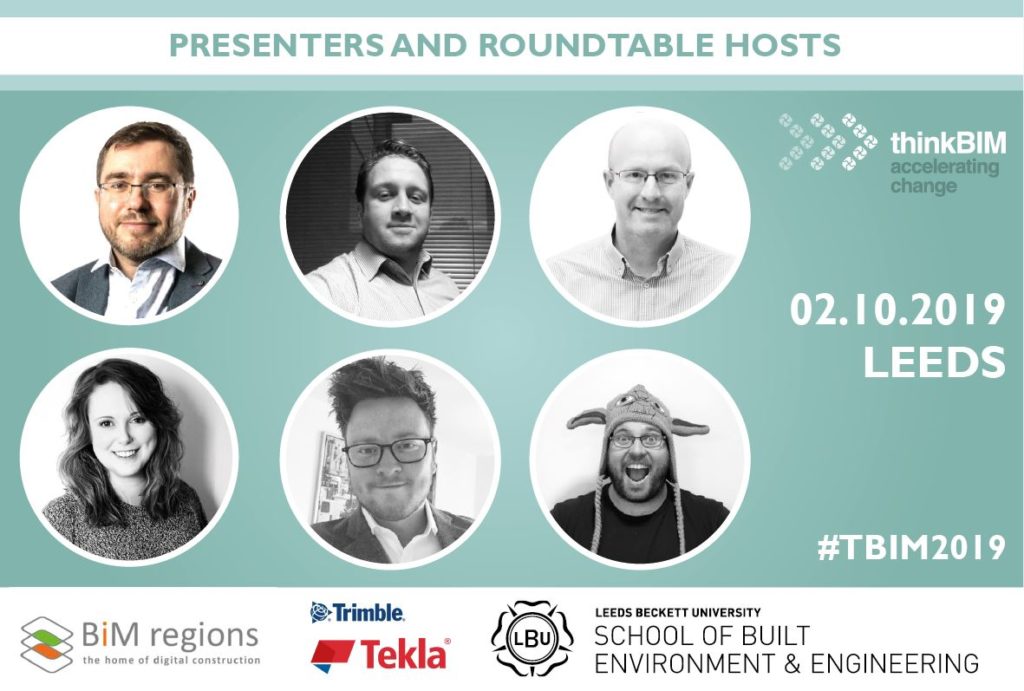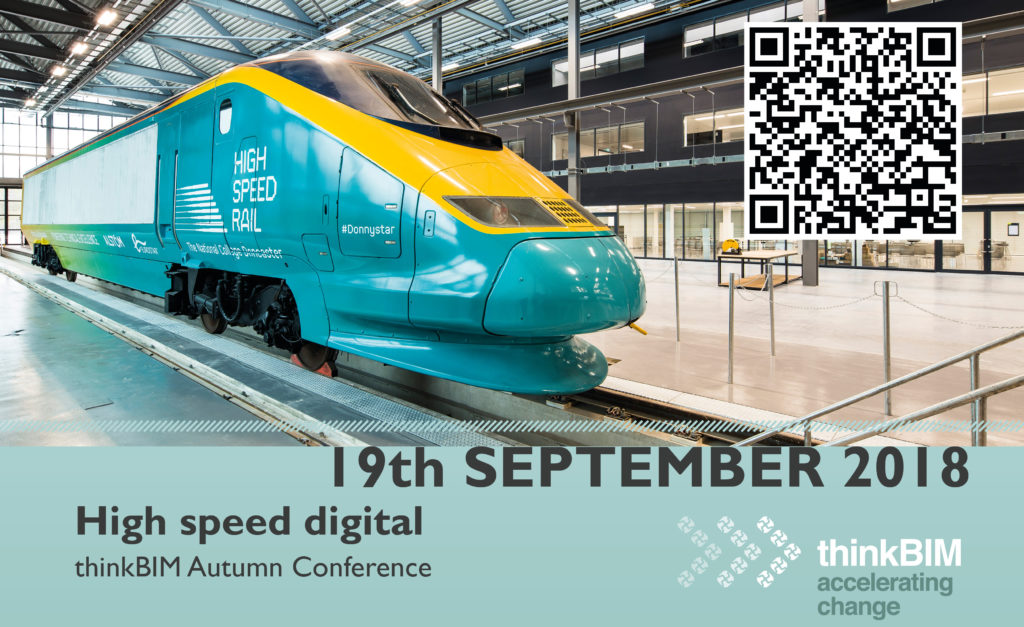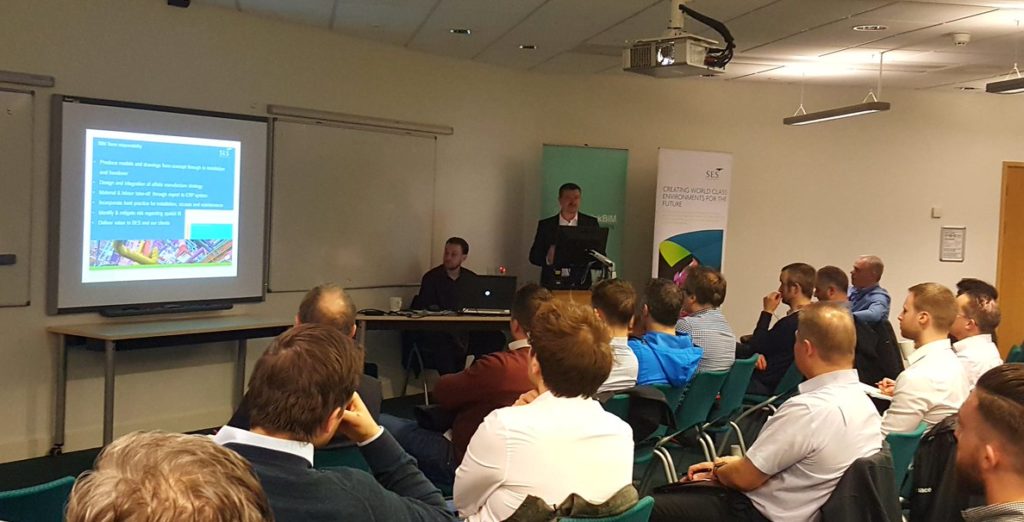#TBIM BIM Design and Preconstruction

BIM Better Data and Good Management Processes
Over 40 construction professionals gathered in the Rose Bowl in Leeds last Wednesday for what was a great event as part of thinkBIM’s autumn BIM: Design and Preconstruction series. BIM users gave a detailed honest view on their involvement in collaborative BIM on the BSF academies projects demonstrating that it is possible to work across the UK linking multidisciplinary team within a collaborative model.
Duncan Reed of Balfour Beatty opened the evening taking our group through construction as was and where we are now, using excellent quotes and analogies along the way. Martin Bissell of Ramboll started his presentation with the image of Harold Bluetooth, a man who lived through turbulent times with a dream to unite Norway and Denmark; likening this to the need for common language, common systems and common design platforms for BIM to work. Paul from Quick-Surv, was our final awe inspiring presentation which took a look to the future with a fascinating insight into flying drones for 3D topographical surveys.
Duncan painted an excellent picture of BIM where we are now where we are heading and not one image of a #BIMmodel. Highlighting the complexities of projects with their ‘mish-mash’ of software and how these are put together in a collaborative model. Duncan stressed the importance of understanding customer needs, it is not enough to simply be better at what we should already be doing. BIM is not just for the benefit of the contractor it needs to be for the benefit to the customer to enable contractors and clients to speak their language – gives ability to communicate in their own language and format. Tips given by Duncan as to how to succeed in BIM included the need to understand what the project team are signing up to on day one – understanding that it is not a bolt on, but a defined process. For the project to be a success there must be a BIM champion and the supply chain must be able to make their own choice of software and suppliers need to be engaged early on. Bringing the presentation to a close Duncan stressed that it is necessary for us all to ‘Eat the elephant one bite at a time’.
Martin Bissell offered an excellent insight into Interdisciplinary management in the BIM environment from the Nordic leader Ramboll asking if BIM could be the magic bullet – the mechanism for global projects in times where the UK market struggling and for projects in the UK which require expertise to be brought in from specialists all over the UK. Martin presented some of the Ramboll views of IFC which indicated that there are still numerous issues to be ironed out, some describing IFC as ‘2000 unjointed elements’. Martin was clear that a mechanism for bringing everything together on a project was essential and that the best strategy for this was to get a common platform to work within. The importance of BIM plans,version compatibility, naming conventions, appointing a BIM coordinator to take control of model make sure it comes together well, defining the scope, understand the chain of custody and understanding the objectives of using BIM were all stressed. Their approach to BIM was clearly focussed around consistent deliver and management of client expectations with particular reference made to explaining to clients the different stages and managing their expectations whilst challenging their understanding and defining their needs in detail and showing them sample models: a lesson to learn for other BIM users.
Paul of Quick Surv presented some of the work they have been doing with Balfour Beatty on 3D survey standardisation. The 3D surveys can roll throughout a project and build up a good data set early on. The models can be updated and continuously grow until there is an as built model for the client once you have left the site. Paul drew our attention in particular to this tool as a great health and safety tool bringing benefits of highlighting service clashes. Paul then drew our attention to the future of photographic surveying with the Gatewing x100 Drones that can fly and scan project sites (Video link for Gatewing X100).
A lively Q and A focussed mainly around client expectations and levels of understanding of BIM and how this can best be managed; what a suppliers best avenue is to get into the BIM world ; and the recurring question of engaging FM in the BIM process Slides from the presentations can be found here.



